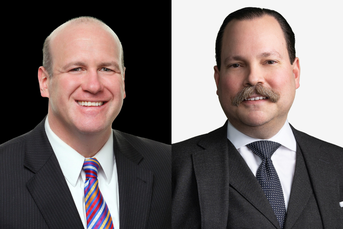Charging clients fees based on planning rather than AUM works ‘beautifully’ for advisor

Although AUM fees still dominate, other models — such as planning, subscription, monthly and hourly fees — are gaining traction, according to IN's goRIA panelists.
Carolyn McClanahan charged her clients a fee based on their assets under management when she started her investment advisory practice in 2004. Three years later, she switched to fees based on the financial planning she does for them and she hasn’t looked back.
McClanahan changed her compensation model because she noticed that clients with high AUM essentially were subsidizing clients with more modest assets. Now, her fees are tied to their financial challenges.
For instance, she’ll charge more if the client has multiple income streams or intricate tax and estate structures, runs a business, has other special planning issues or has highly disorganized finances.
“It’s worked beautifully for me,” McClanahan said Tuesday during an InvestmentNews goRIA webcast. “We have a very consistent revenue stream.”
McClanahan has a minimum fee of $10,000. Her average fee is about $21,000. If a client’s complexity eases — for instance, through the sale of a business — the fee goes down. If she raises a fee, she sends the client “a nice letter” explaining the adjustment.
“We get very little pushback,” McClanahan said. “More often, we get clients [asking] what can I do to be less complex.”
The goRIA episode, “Taking Charge of Your Advisory Fees,” explored the various ways financial advisors are moving beyond AUM fees. That’s still by far the most popular model, with about 71% of advisors using it, according to Cerulli Associates statistics. Commissions are the form of compensation used by about 24% of advisors.
But other fee models are emerging and gaining traction, including fees based on financial plans, annual or retainer fees, monthly or ongoing subscription fees and hourly fees.
An increasing number of advisors are looking into alternative compensation methods, said Matt Matrisian, senior vice president and chief channel officer at AssetMark. “Planning-based fees, I think, are becoming more and more popular as advisors are looking across the value spectrum that they deliver and not necessarily just moving that planning fee up into an overarching advisory fee.”
Fees that are linked to financial planning emphasize the development of a holistic financial plan instead of putting a focus on the management of accumulated assets, as an AUM fee does.
“We’re financial problem-solvers,” McClanahan said. An AUM fee “gives the advisor an incentive to be too aggressive with a portfolio.”
But there can be conflicts of interest for advisors who charge a fixed fee. For instance, they may set and forget it, and not do much work for the client after the initial plan is set. State securities regulators have raised concerns about this kind of situation.
McClanahan said she revisits every part of a plan annually and reports to clients at least quarterly, as she ensures that she keeps up with their goals. She also shows her work.
“We keep this beautiful spreadsheet,” she said.
Kate McBride, founder and president of FiduciaryPath, said an advisor whose compensation is based on charging a set fee — whether it’s based on AUM or other services — is more likely to avoid conflicts than an advisor whose pay is based on the product she sells.
With fee-only advice, “you can use products that are the least expensive for your client to fulfill the asset allocation that you provide and therefore, save your client money and rev up their return,” McBride said.
An advisor who is “fee-based” — and compensated with a blend of fees and commissions — also can act in a client’s interest when recommending a commission investment product for a buy-and-hold strategy, Matrisian said.
“In every walk of life, it’s going to be up to that [advisor] to make sure they’re making the best possible decisions for their clients and acting in their best interests,” he said.
Here’s what wealth advisors need to know before going solo
Learn more about reprints and licensing for this article.








